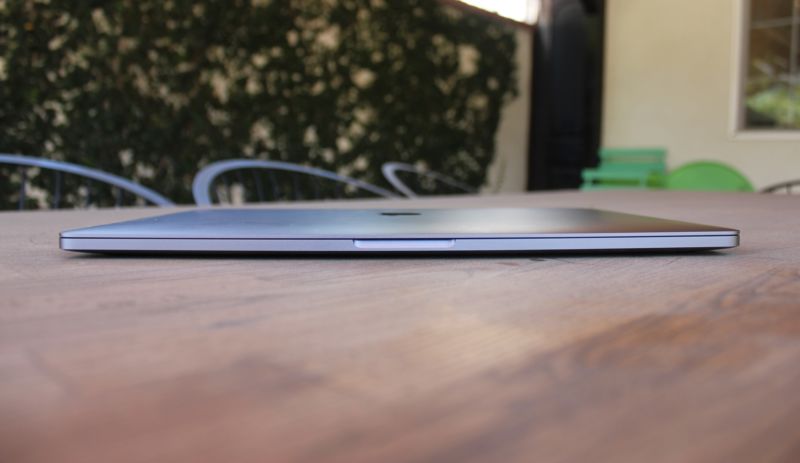
Early speculation suggested that this was because of the inability of the MacBook Pro's thermal management system to support the demanding Intel Core i9 CPU. But Apple quickly announced that it had discovered a bug in the MacBook Pro's firmware that affected the heat management system. A firmware update was released earlier this week. Here is Apple's public statement on the issue:
Following extensive performance testing under numerous workloads, we've identified that there is a missing digital key in the firmware that impacts the thermal management system and could drive clock speeds down under heavy thermal loads on the new MacBook Pro. A bug fix is included in today's macOS High Sierra 10.13.6 Supplemental Update and is recommended. We apologize to any customer who has experienced less than optimal performance on their new systems. Customers can expect the new 15-inch MacBook Pro to be up to 70% faster, and the 13-inch MacBook Pro with Touch Bar to be up to 2X faster, as shown in the performance results on our website.
We dedicated some time this week to re-running all the benchmarks we did for our review in order to see how performance was impacted by the firmware update. We also wanted to see side-by-side comparisons of clock speeds before and after the update.
In one test, we artificially pushed all CPU cores to maximum utilization by generating 12 processes with "yes > /dev/null &" in Terminal. We measured the CPU clock frequency in Intel's Power Gadget tool. First, we let the processes run for five minutes before taking a snapshot of the clock frequency graph you see below—the pre-firmware MacBook Pro's Core i9 CPU throttled well before that point.
Then, we repeatedly ran GFXBench Metal's 1080p Manhattan offscreen GPU benchmark while the processes were still running. We took the snapshot for this test during the third successive run of that benchmark.
We did this in a temperature-controlled room (72 degrees Fahrenheit). We ran the tests once before applying the firmware update and again after applying it.
-
This graph represents clock speed pre-firmware update in our test that artificially pushes all CPU cores to full utilization, but that does not tax the GPU. Even here, there is erratic performance and throttling.Samuel Axon
-
This is the same CPU-only test after the firmware update. As long as the GPU is not also heavily engaged, the CPU maintains a clock speed well above its base clock and stays consistent.Samuel Axon
-
This graph represents the clock speed during our worst-case scenario GPU-and-CPU test. Throttling was severe and erratic, often dipping well below 2GHz.Samuel Axon
-
This is the GPU-and-CPU test result after the firmware update. The peaks and valleys represent the GPU portion of the test stopping and starting again, as it's a short test, and there's a brief rest between runs.Samuel Axon
In our post-firmware test, a 3.5GHz clock speed was maintained even when all cores were fully utilized for an extended period of time. This was definitely the performance that Apple promised when announcing the new MacBook Pro lineup, and we're glad to see that the firmware update has made it a reality.
Things get muddier when the GPU is also fully taxed, though. At that point, the CPU is throttled to as low as 2GHz. However, performance is consistent, which is essential for 3D modeling and many other workflows that were hampered by the wild fluctuations we saw before the update.
Keep in mind that this was an artificially produced worst-case scenario that is more severe than almost all actual use cases, but the MacBook Pro still can't fully tap the potential of both the CPU and GPU simultaneously. This is not surprising, given the laptop's form factor. It's a compromise for portability.
We performed many more tests, and they all told exactly the same story—behavior is now normal and as advertised in the vast majority of cases, but some extreme scenarios involving both the CPU and GPU still lead to throttling, but with more consistent clocks. The above test just illustrated that most clearly.
We've updated our review with these revised benchmark results accordingly since recent tests delivered different results after the update. In many cases, results were not substantially different; that's because many of our standard review benchmarks measure short bursts of performance rather than sustained performance over a period of time. The flaw only impacted tests that measured the latter scenario.
After the update, the MacBook Pro is now easier to recommend to most creative professionals, developers, and researchers—provided they can afford it and wish to prioritize a balance between performance and portability, that is.
reader comments
145